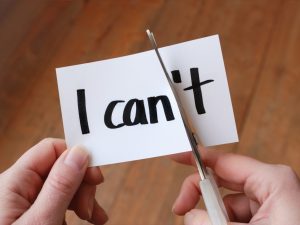Before defining self-esteem, it is necessary to define and understand self-concept since self-esteem is based on self-concept.
Self-perception forms a mental concept of who and how we are; we all have a mental image of ourselves, that is, a perception and an idea of how we are both physically and psychologically.
We form that image over time, beginning in our childhood.
This idea of ourselves can coincide with the idea that others have of us or not; even this idea can coincide with reality or not.
The more realistic the self-concept, the more appropriate our interaction with the environment around us, the more we accept ourselves, the greater our capacity for personal growth, and the stronger our self-esteem.
Self-esteem can be defined as the emotional result that arises if we accept and like our self-concept.
Contrary to popular thinking, self-esteem does not arise from evaluating ourselves positively in each situation but from observing ourselves objectively and, above all, from estimating and accepting our self-concept.
Self-esteem is not a fixed and stable concept; it manifests itself in a changing way depending on our vital situation and circumstances and is modified throughout our lives.
We have verified in our consultation that it is the only trait that constantly improves when doing the psychological treatment.
Ladder of self-esteem
Self-esteem – Ladder of self-esteem
It is a technique that consists of internally restoring the confidence and esteem of the individual for himself, guiding him through the different levels of self-appreciation, and achieving the definitive conquest of high and healthy self-esteem.
The different levels that define what the ladder of self-esteem is are the following:
Self-recognition: At this level, you must recognize your weaknesses, needs, strengths, and abilities to get to know yourself. This is accomplished through acceptance, detection, and action. Example: a person who recognizes that she is good at making dresses.
Self-acceptance refers to accepting and assuming all the parts and characteristics that make up the personality and its qualities. For example, a person accepts that one of her qualities is attention to detail.
Self-assessment: At this level, the subject has previously recognized what distinguishes him from others and the essence of him, so in this step, he evaluates and values the positive aspects that he possesses, which make him feel good and make him grow. That is, he begins to value his qualities once they are identified.
Self-respect: At this level, the person will have the ability to manage their feelings without flagellating or feeling guilty, knowing that they deserve better things and give themselves their place before others, without allowing them to be trampled upon by recognizing their rights and those of third parties.
Self-improvement: It consists of constant individual improvement. This is achieved after knowing, accepting, and evaluating the capacities and potentials that one has to strengthen those qualities later.
What is a self-esteem test?
It refers to a series of evaluations and behavioral tendencies focused on the individual himself, his character, or his way of being. This type of method helps the person to value their self-esteem.
The meaning of self-esteem becomes a key to success or failure, to understand yourself and others. Remember that self-esteem has two dimensions: self-awareness and self-love. All this generates acceptance, trust, and respect for oneself, interest in their development, facing life challenges, and the right to be happy.
There is a method to determine a person’s level of self-esteem, which is the Rosenberg Self-Esteem Scale. This consists of a brief psychometric self-esteem test that is applied both in clinical practices and in research. This consists of ten questions, the score of which varies between 1 and 4.
The one corresponds to the answer “Strongly disagree” and the 4 in “Strongly agree” or vice versa, depending on the nature of the item.
The questionnaire or scale, developed by the professor and sociologist Morris Rosenberg (1922-1992), consists of 5 positive and five negative questions, which are the following:
I feel that I am a person worthy of appreciation, at least as much as others.
I am convinced that I have good qualities.
I am capable of doing things as well as most people.
I have a positive attitude towards myself.
In general, I am satisfied with myself.
I feel like I don’t have much to be proud of.
In general, I am inclined to think that I am a failure.
I wish I could feel more respect for myself.
There are sometimes I think I’m useless.
Sometimes I think I’m not a good person.
Where does self-esteem come from?
From our parents, our teachers and more people. The people in our lives can influence how we feel about ourselves. When they focus on the good we have, we feel good about ourselves. By being patient when we make mistakes, we learn to accept ourselves. When we have friends and get along with them, we feel accepted.
But if adults scold us instead of praising us, it is difficult for us to feel good about ourselves. Bullying and being picked on by your siblings or colleagues also damage your self-esteem. Harsh words leave a mark, and they become a part of what you think and how you feel about yourself. Luckily, things don’t have to continue like this.
Your inner voice. The things you say to yourself play an essential role in how you feel about yourself. Thinking things like: “I am a failure: I always lose” or “I will never make friends” damages your self-esteem.
There are other ways of thinking about the same things. “I haven’t won this time, but maybe I will win next time.” “Maybe I can make some friends.” This inner voice is much more hopeful. It helps you feel good. And it could become real.
Sometimes our inner voice is based on the harsh words that other people have said to us. Or in bad experiences that we have had. Sometimes our inner voice is very harsh on us. But we can change that inner voice. We can learn to think better things about ourselves.
Learn to do things. We feel good when we learn to read, add, draw, and build things. Play a sport, play music, write a story, ride a bike. Set the table, wash the car. Help a friend, take your dog for a walk. Everything you learn and do is an opportunity to feel good about yourself. Take a step back and see what you are capable of. Let you feel happy about it.
But sometimes, we are too harsh and critical of ourselves. We don’t accept that what we do is good enough. If we think, “It’s worth noting,” “It’s not perfect,” or “I can’t do it well enough,” we miss out on building our self-esteem.
What if I have low self-esteem?
You can do things to feel better about yourself. It’s never too late. Here are some tips for raising your self-esteem:
Connect with people who treat you well. Some people act in ways that make you feel bad. But other people lift your spirits with what they tell you. Learn to grasp that difference. Choose friends who help you feel good about yourself. Find people with whom you can be yourself. Be that kind of friend with others.






























Add Comment